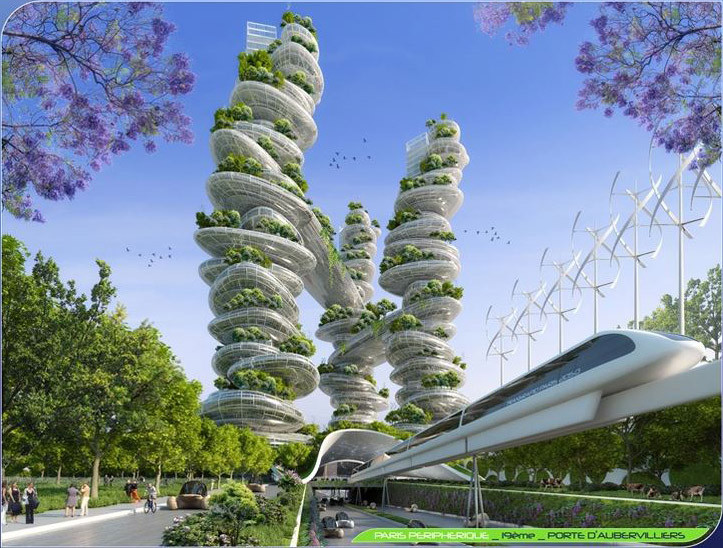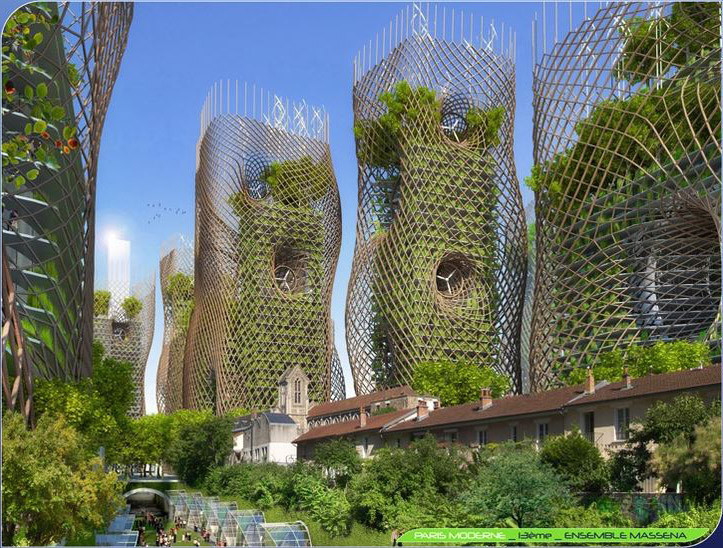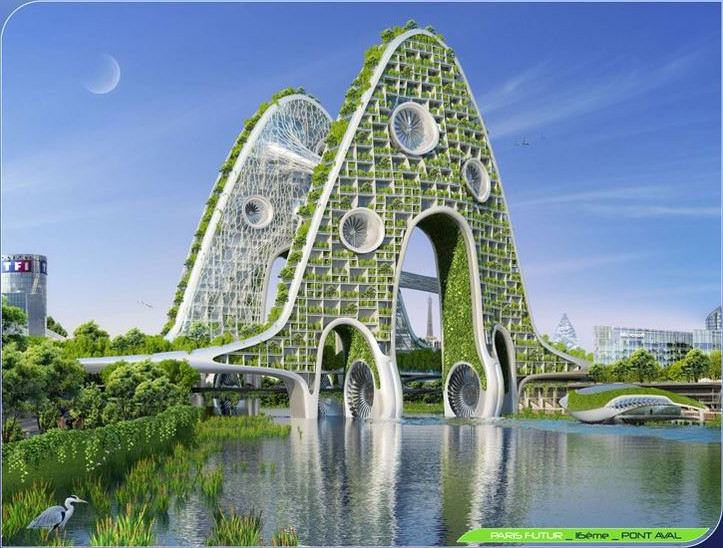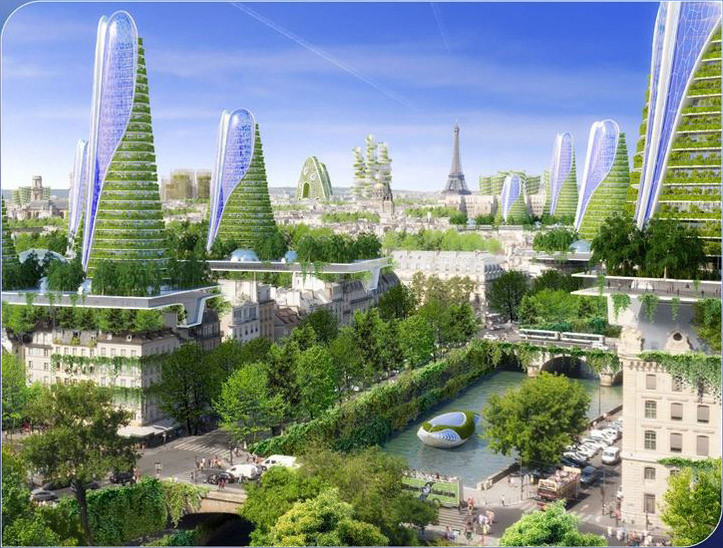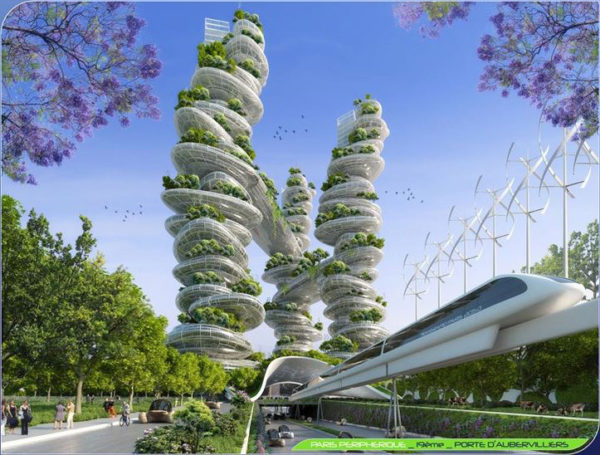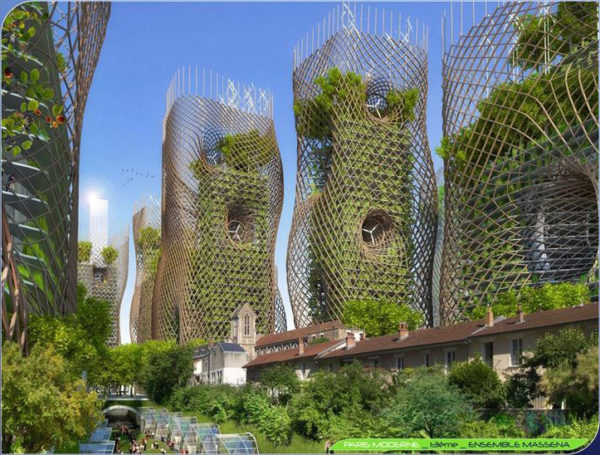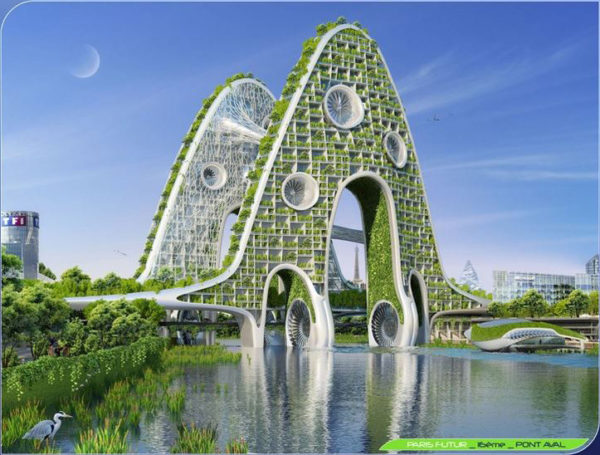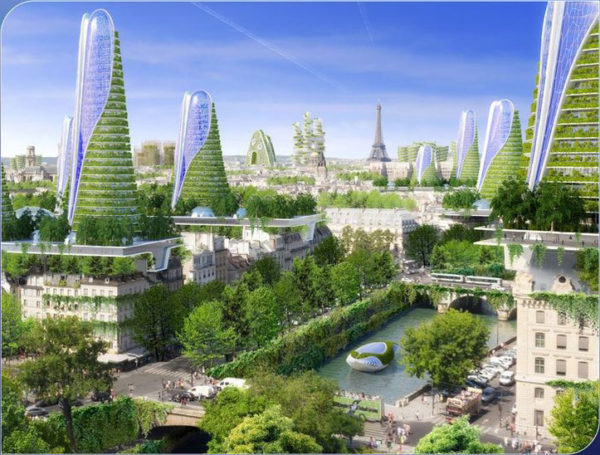Under anthropological aspects, CO2’s main sources are our combustion processes, e.g. energy production and cars. Cutting down forests and other so-called land use approaches are contributing as well. Maybe the latter is about to change considering our blog post on the terra0 project.
Since CO2 emissions easily accumulate in the atmosphere, climate change is now upon us. In order to reduce those emissions drastically and keep the global temperature from rising above 2%, the United Nations signed the Paris Agreement in 2016. As a direct consequence, many cities worldwide are strongly focusing on becoming greener. And they are doing it the Smart City way. Using technology, areas like mobility, building-architecture, and waste usage get overhauled. So what would a Smart City be without Smart Buildings? And what if those buildings mimic trees?
On that note, the city hall of Paris commissioned Vincent Callebaut Architecture to design several prototypes for Eco-Buildings that help achieve the cities aim to reduce 75% of CO2 emissions by 2050.
Callebaut has been called an archibiotect, winning several awards for his visionary projects that address environmental as well as social issues. He works worldwide to transform the way of approaching architecture toward more sustainability by using nature as his inspiration.
The 8 Prototypes designed for Paris are nothing short of being futuristic. Imagine Buildings that breathe in CO2, produce energy within their facade or create their own biofuel. On top of that, every building is designed as a self-sustaining unit with mixed-uses. Combining residential with business and commercial functions, the concepts also aim to cut down the need for transportation within Paris. More utopian feelings here.
Visions like Callebaut’s are an amazing point of discussion. While Smart Cities want to increase the quality of life for their citizens as well as becoming sustainable, no one really knows how that looks and feels like. Especially with technology being the primary means, my longing for more natural reconnection grows. So scenarios and images like this one can open the discourse about the future of cities to everybody, which is what our lab is all about.
